“The Hafners construct another fine antebellum home in Chester County, S.C.”
City Directories and History: Cedarhurst Plantation, the Atkinson home, was named for the massive 19th century cedar trees planted on the front lawn of the home.
The house remains one of the outstanding examples of plantation architecture in Chester County. Built by James Atkinson, Jr. and his wife Sicily Caroline Mobley Shannon Atkinson in circa 1850, this home retains many of its original features including the front porch, columns, staircase, doors, mantles, hardware and flooring. It has served as a family home for generations of the Atkinson family. For instance, it is recorded that James Atkinson, I’s widow came to live the rest of her life, here at Cedarhurst, with her grandson James Beldon Atkinson, the great-grandfather of the current owner.
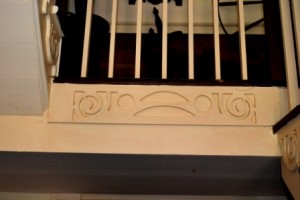
Image of the staircase landing at Cederhurst – 2012
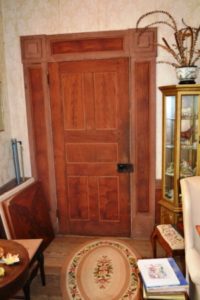
Lovely grained interior doors.
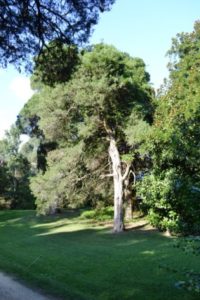
One of the ancient cedar trees remaining at the home and additional architectural elements which enhance the home.
Mrs. S. M. Floyd wrote concerning her family home, “I know my mother said she saw the date of 1850 painted on the chimney so I can not understand the date difference. Some records say Edward Mobley built the house for Sicily. Much of the interior wood work was similar to that of his home I saw that as a young person.
In my grandmother’s ( Emily Atkinson Meador) handwriting it says, “Papa says his mother went to her fathers home for him to be born.” This would be James Beldon Atkinson born, 1826. As the story goes James Beldon Atkinson was building his house (now owned by Mary Sanders) in the Armenia section on land that had belonged to James Atkinson, I at the same time the house, Cedarhurst, was being built.
It has been family tradition that the younger generation went back to the home place to look after their elders. When James Atkinson, II became decrepit, James Beldon Atkinson sold his place in Armenia or traded the land with James Atkinson, II for Cedarhurst/ Big Spring. My grandmother was born in the Armenia house in 1877 so the move would have been after that. My Aunt Belle was born at Cedarhurst 1880 , so the sale/trade occurred before that. The land in Armenia was sold to a Brakefield. Mary Sanders father who was an Atkinson bought it back for his family.”
The farm itself, named Big Spring, due to the flowing spring found just to the east of the house, is an impressive parcel traversed by several early roads. It was a popular 18th and 19th century gathering spot for those wanting good water. But the construction of Cedarhurst itself, set the stage, for generations of the Atkinson family to reside here. Without further research, it is difficult to ascertain the exact date of construction and whether the current structure may even encompassed that of an earlier dwelling. What is known, is that in the 1850’s, the home took on it’s current appearance and has remains in the same form. When the house was constructed for Mr. James Atkinson, a man of significant means, he would have desired to present a fashionable home for the family. He therefore hired members of the Hafner family to construct Cedarhurst as it now stands. Different members of the Hafner family were in the construction business but it is thought that Andy (Andrew) Hafner or Hefner, a York County and Chester contractor-mechanic, built the home. He routinely worked with other family members including; Marcus, J.A., Alfred, and Ephraim. It is difficult to determine which one of the family members specialized in specific carpentry skills but they all were young men in their 20’s in the early 1850’s. In 1851, the Hafners were completing the Blair home in York County, SC. It is interesting to note that both the Atkinson home and Blair house each had a date on their respective chimneys. It is also noteworthy, each house had highly similar mantles, moldings, and layout. Items that were matching include; staircase, octagon columns, from entrance, doors, and casings in the parlors. The two homes were clearly built by the Hafner clan.
Known as a Carolina “I’ House design, Cedarhurst differs from most homes of the period in that the chimneys were built at the rear, rather on each end of the structure. Note also, the use of cut granite foundation blocks at Cedarhurst (could be replacements) where as the Hafners routinely used brick foundations for most of their homes. The similarities between the Blair and Atkinson home are unmistakable and add significantly to the base of knowledge surrounding the Hafner family and their noted construction business.
The grounds, plantings, and surroundings at Cedarhurst are all historic and are maintained beautifully with an eye toward preservation and respect of the land and history of this important site. Besides the massive cedar trees found on the property there are also many “old” and exquisite varieties. The house also has an association with Orr’s Baptist church, which is reported to be an offshoot of the Atkinson Sunday School which originally meet at the Atkinson home, Cedarhurst. Interestingly, there was also an A.R.P. congregation named Big Spring from Chester, SC under the leadership of Rev. John Mushat from circa 1811-1820. It is unknown as to what happened to this early congregation.
Obituary of Andrew Hafner—York County’s oldest citizen died March 16, 1914 at the home of his son-in-law, Dr. S. G. Miller of Chester. He was 92 years and 4 months. Hafner was born in Catawba Co. N. C. but had lived in York County 70 years as a contractor and farmer. He was married 3 times: (1) a Miss Gwinn; two daughters, both died as young women; (2) Kezia Hardwick, six children: Mrs. J. B. Patrick, died at White Oak ca. 1894; R. R. and J. A. Hafner and Mrs. S. G. Miller of Chester; B. W. Hafner of Newport, Ark. and Rev. W. A. Hafner of Fort Mill; (3) Mrs. Sarah West of Newport, Ark. who died ca 1894. Hafner was deacon of Bullock Creek Presbyterian church for more than 50 years and was buried there.
– Fort Mill Times, March 19, 1914. (Information courtesy of and from: YCGHS – The Quarterly Magazine)
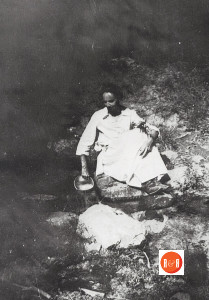
Belle and Em on the front porch of Cedarhurst and dipping water from the Big Spring at Cedarhurst. Courtesy of the Floyd Collection – 2013
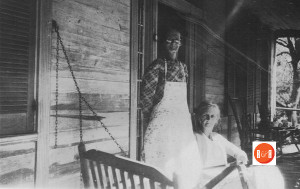
Informative link: Mills Map of Chester County SC, also see under More Information a PDF of Meador Family history.
BIG SPRING TRACT
1797 – William Wylie to John McElroy
1826 – Heirs of John McElroy to John Kidd
1827 – John Kidd to John J. J. Howard
1831 – John J.J. Howard to John Dunovant
1838 – John Dunovant to Ritchison Mildoon
1844 – Eleanor Mildoon to Thos. K. Gilmer
1854 – W. Taylor Gilmore to James Atkinson
INDEX OF NAMES ASSOCIATED WITH BIG SPRING MAP
Atkinson, James
Beckham, Lewis
Bigham, William
Bradford, James
Bradford, William
Castles, Samuel
Chisholm, David
Chisholm, Thomas
Chisholm, William
Craig, George
Craig, John
Crank, Mary
Dunovant, John
Ferguson, Paul
Gilmer, Thomas K.
Gilmore, William Taylor
Hannah, Agness
Hood, Andrew
Hood, James
Hooper, George S.
Howard, John J.J.
Keenan, Samuel
Keenan, Stephen
Kidd, John
Knighton, Moses
Knox, William
Marion, John S.
McClintock, Thomas
McClure, James
McClure, Margaret
McClure, Thomas
McCullough, James
McDaniel’s Ferry Road
Stillhouse Branch
McElroy, John
McFadden, Isaac
McLaughlan, Widow
Mildoon, Ritchison
Miller, William
Mobley, Biggers
Mobley, David
Morrow, John
Murphy, John
Neely, Amzi
Nelson, Ashley
Nelson, William
Poag, John
Rowland, William Dr.
Stringfellow, Dr.
Thomson, Robert
Walker, John T.
Walker, William
Wiley, James
Woodward, William
Wylie, Duncan
Wylie, James M.
Wylie, Peter Esq.
Wylie, Sarah
Wylie, William
Stay Connected
Explore history, houses, and stories across S.C. Your membership provides you with updates on regional topics, information on historic research, preservation, and monthly feature articles. But remember R&R wants to hear from you and assist in preserving your own family genealogy and memorabilia.
Visit the Southern Queries – Forum to receive assistance in answering questions, discuss genealogy, and enjoy exploring preservation topics with other members. Also listed are several history and genealogical researchers for hire.
User comments welcome — post at the bottom of this page.
Please enjoy this structure and all those listed in Roots and Recall. But remember each is private property. So view them from a distance or from a public area such as the sidewalk or public road.
Do you have information to share and preserve? Family, school, church, or other older photos and stories are welcome. Send them digitally through the “Share Your Story” link, so they too might be posted on Roots and Recall.
Thanks!
Mrs. Emma A Meador – by Annie P. Collins Chester News, January 13, 1965 (Courtesy of the CDGHS – Bulletin)
Mrs. Emma A. Meador left a priceless legacy Rowe penned the words, “Age sits with decent grace upon her visage, and worthily becomes her silver locks. She wears the marks of many years well spent, of virtue, of truth well tried, and wise experience.” They aptly describe Mrs. Emily “Emma” Atkinson Meador of Chester who during 87 active years of life, left a priceless legacy to her family and community. This is a brief story of her life and legacy-of her accomplishments in the face of formidable odds-and of the philosophy she lived by.
On May 5, 1961, in the twilight of her life, “Mrs. Emma” took pen in hand to write her will. She prefaced it with these words: “My life has been a long one according to number of days but short when I remember how little happiness and Christ-like love and service I have rendered in my beloved community, county and state. I pray to be useful as long as I live. My prayer for each and every one of you, your children, and your grandchildren of years to come, is that you will live up to your heritage of family, Christianity and faithfulness in all the responsibilities of life—.” “These things I will to you whom I love, with a heart yearning for your success in life. I pray that all of you will join me and all the dear ones who have gone on to enter the blessedness of the New Jerusalem.”
This humility, concern for others and for the fixture, characterized Mrs. Meador all of her days. She was born near Lowrys in Chester County in 1877, the daughter of James Beldon Atkinson and Mrs. Sarah Woods Atkinson. A cousin, Biggers Atkinson, now lives in the house in which she was born. She spent most of her life at Cedarhurst, once a large plantation named by her grandfather, James Atkinson, Jr. He built and first lived in the home and planted the cedar trees from which it got its name. The plantation including the present Boldridge farm and lands across to Orr’s Station in northeastern Chester County, was originally owned by Edward Mobley. He willed the land and 200 slaves, all listed by name to his daughter, Sicily Bell Mobley at the time of her marriage to James Atkinson, Jr. One of the Mobley ancestors, a sea captain gave the name Sicily to a daughter, who was born on the island of Sicily, and each succeeding generation since then has had a Sicily named in her honor. A handsome portrait of Cedarhurst’s mistress, Cicely Mobley Atkinson hangs in the parlor of the two-story house built more than 100 years ago.
Mrs. Meador had an active life before settling at Cedarhurst. She was educated at All Healing Academy later Jones Academy, and still later Linwood College, near Gaffney, which was closed in 1922. She came home and began teaching at Robinson school, a small one-teacher school near McFadden’s Lake (now Walker Atkinson, Sr.’s lake). She walked to school every day and taught students who were almost as old as she was. One of her pupils was Mrs. Kate Robinson Jones who now lives at Lewis Turnout. Mrs. Meador was teaching at Leeds, another one-teacher school, when she met and married William Daniel Hawkins Meador. Three children, Guy Atkinson, Etta Bell and Emy Mildred Meador were born to the couple before they moved to Cedarhurst Plantation to take care of her parents in their old age. They built a home nearby which is now owned by Guy Meador. A daughter, Sarah Elizabeth, and a son, Hawkins, were born at Cedarhurst. On April 6, 1911, Mr. Meador died and twenty days later Mrs. Meador gave birth to her sixth child, a daughter, Addie.
So it was that Mrs. Meador found herself the sole support of six children, the oldest only 11 years old. She went back to teaching and during the next few years she taught at High Point School on the Rock Hill Road, at the Ford School in the Orr’s Community, at Pryor School that she and Isaac Turner founded, and at Oakley Hall School. Pryor School, later used as a Negro school, was located on what is now the Oliphant farm on Lancaster Road. All this time Mrs. Meador operated her farm with the help of her children and sharecroppers. As she put it, “We dug our living right out of the soil” with emphasis always on good food and balanced diets for the growing children. She was progressive, a step ahead of most local farmers. She was first to put out nursery fruit trees and a vineyard. Each time she planted her garden, she put in a new vegetable and taught her children to eat and like it. Surplus fruits and vegetables were canned or stored for the winter. There were many things to do. Mrs. Meador sewed beautifully and worked with special skill in remaking garments. She attended farm meetings and was active in the Orrs Home Demonstration Club in order to learn the best farming and homemaking shills.
Mrs. Meador was careful to put first things first, as shown by this foreword to the History of Orr’s Baptist Church: “The year 1912 marks the beginning of religious organization in the present Orrs Community. At this time a Sunday school was organized which was the result of a desire dwelling the heart of a mother, Mrs. Emma A. Meador, who wanted religious training for her children as well as those around her. The need was great as quite a number of people had no regular Sunday School or church connections. This good woman ordered the necessary literature with which to begin and secured the consent of Miss Bell Atkinson (her sister) to use her home for meetings. Accordingly the Atkinson Baptist Sunday School was organized with H. B. Workman as superintendent. The Sunday School grew and prospered.” From the beginning, the Orrs Baptist Church was officially organized on January 27, 1918, with 19 charter members. The same year a Woman’s Missionary Society was organized with Mrs. Meador as president. She held the office for 25 years. She believed in and practiced the tithe, and always supported the Christmas Seal Sale and other campaigns for the public good. In her later years, Mrs. Meador received an unexpected bonus, a sum of money that had accumulated in teacher retirement funds. Her first act was to deduct the tithe and give it to Orrs Church.
Mrs. Meador placed her values wisely. She was well read and took care in selecting books for her children to read. She read aloud to them in the family circle, with the Bible and “Five Little Peppers” as two of their favorites. An example of her intuition occurred when buyers were combing the country for scrap iron. There were piles of it on the Cedarhurst farm and she could well have used the money, but she refused to sell. “Japan is buying and using that scrap iron to war on other countries,” she said. “Someday they may use it on us.” If her own children or the school children she taught said, “I can’t do that,” Mrs. Meador would frequently respond, “Find a way to do it or make one. Don’t take no for an answer.”
In 1945, in a letter to a daughter, she wrote: “I’ve found that we can’t build our hopes on anything to be permanent except trust in God. We must keep our courage in spite of disappoints and sorrows. There are so many more things to enjoy than to annoy if we only take time to value the count.”
There were some dark valleys for Mrs. Meador to pass through. In 1923, shortly after she and her family moved into the Cedarhurst plantation home to live with her sister, Miss Bell Atkinson, Hawkins, her 15-year-old son died. He came to a sudden and tragic death on Christmas morning while he and two companions were out in a pasture testing their marksmanship with an air rifle. A shot gun had been placed on the ground, and in some way was discharged. “Little Hawkins,” as he was known, was killed instantly Mrs. Meador’s oldest daughter, Mrs. Etta Bell Meador Mahaley of Charlotte, N. C. died in 1949. At age 62, Mrs. Meador stood and passed the Civil Service examination and accepted a job in the Social Security office in Columbia, where she lived and worked until her retirement. During her teaching career she took special courses for nine years at the Winthrop College Study Center held on Saturdays at Chester High School. Daughters Mildred and Sarah took the courses with her.
Mrs. Meador was active in restoring old cemeteries, especially the Atkinson family cemetery on Pinckney Road. She and her son, Guy, cleared debris, made a road into the Cemetery and erected markers. Mrs. Meador died on September 15, 1964 shortly after passing her 87th birthday. She was an invalid for many months but never lost her interest in people and events. She was an ardent sports fan, especially of the Chester Cyclones and Cyclonettes. Even after she was bedridden she listened to the radio broadcasts of every game. She coached from her bed and called the plays even though she could never quite tell the difference between a first down and a touchdown. She knew the players by name and fussed at them when they made mistakes and clapped her feeble hands in applause when they executed a good play.
“I have since learned how far from true my assumption was, and how fortunate I have been to be exposed to good example has come from Granny, both directly and through her children. I hope that the example that I set before my children can be as good, and I hope that when I reach the evening of life, it can be said of me, as it can certainly be said of Granny, “Well done.” Mrs. Meador’s surviving children are Sarah Meador (Mrs. R. Y.) McLemore, Mildred Meador (Mrs. G. T.) Conrad, and Guy A. Meador, all of Chester, and Addie Meador (Mrs. Henry L., Jr.) Sneed of Florence.
User comments always welcome - please post at the bottom of this page.
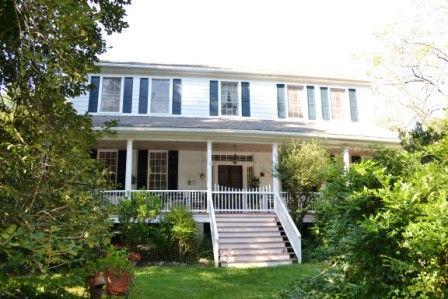
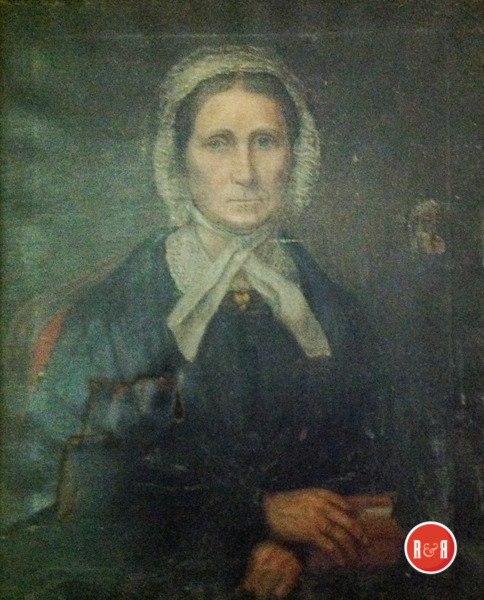
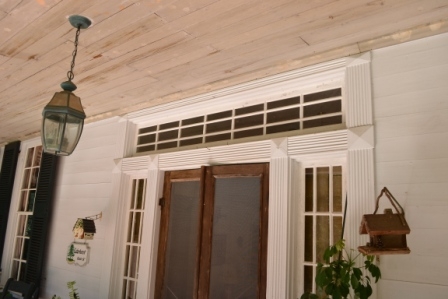

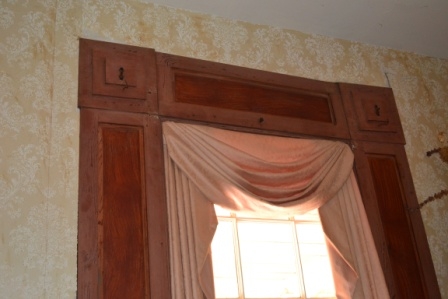
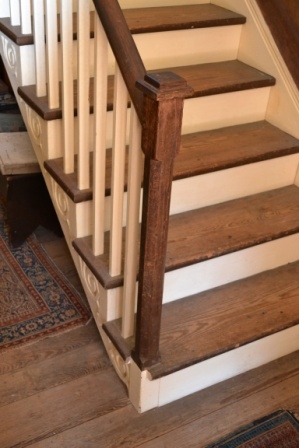
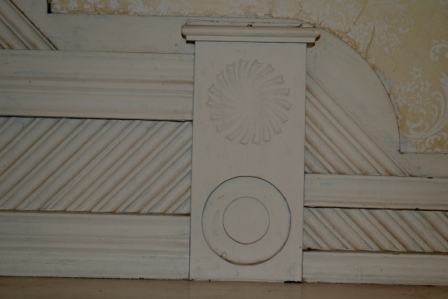
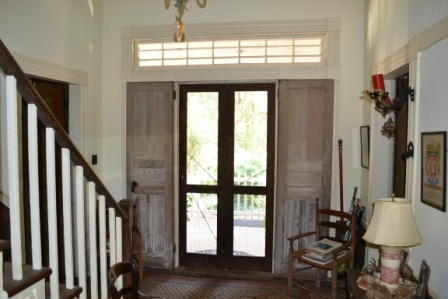
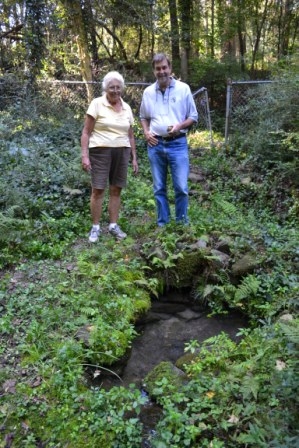
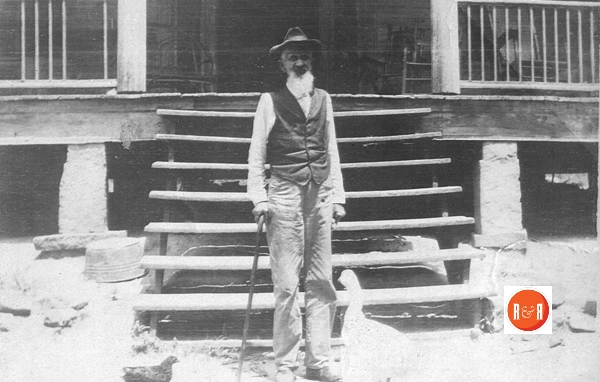
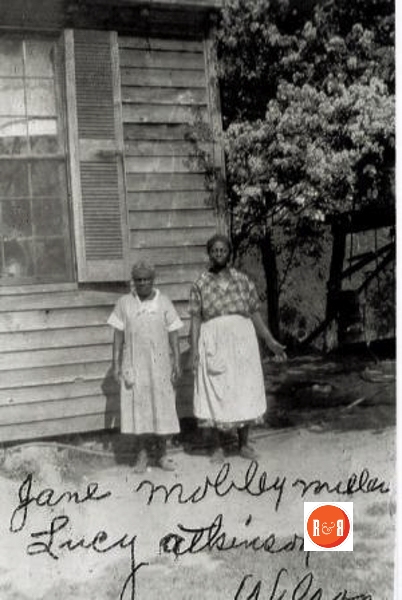
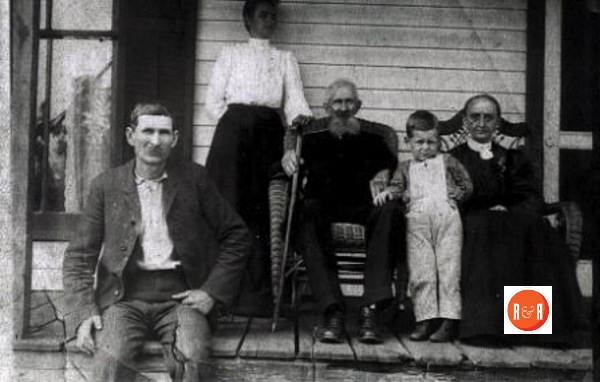
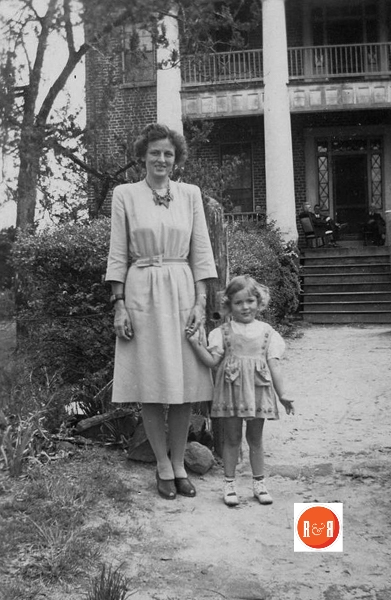
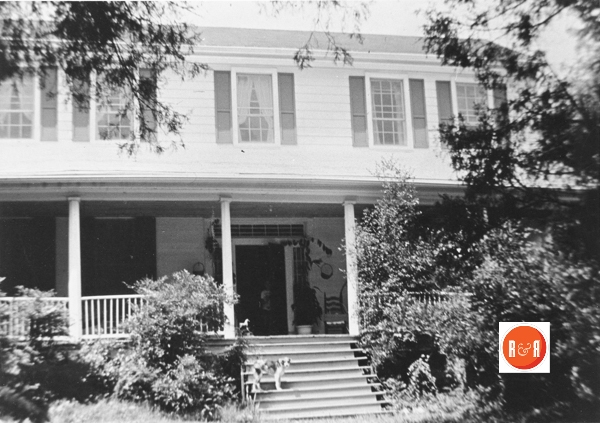

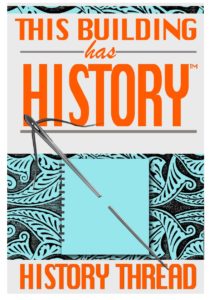

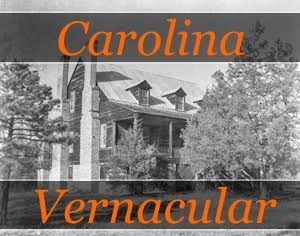








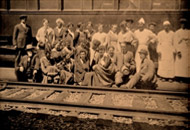
I am Timothy Huntley Atkinson, my ancestors were a part of this home. So glad to have found this page. Visited the area once a while back and so enjoyed seeing the home and meeting some fellow Atkinsons.
Sicily Caroline Mobley was my 5th great grandmother. I descend from her first marriage to Thomas Shannon. Their child William Shannon was my line, that I descend from. Thank you very much for sharing the painted portrait of my ancestor and sharing more of her story. We are all half cousins I guess! I truly appreciate the stories and photos, it put life to my great grandmother.